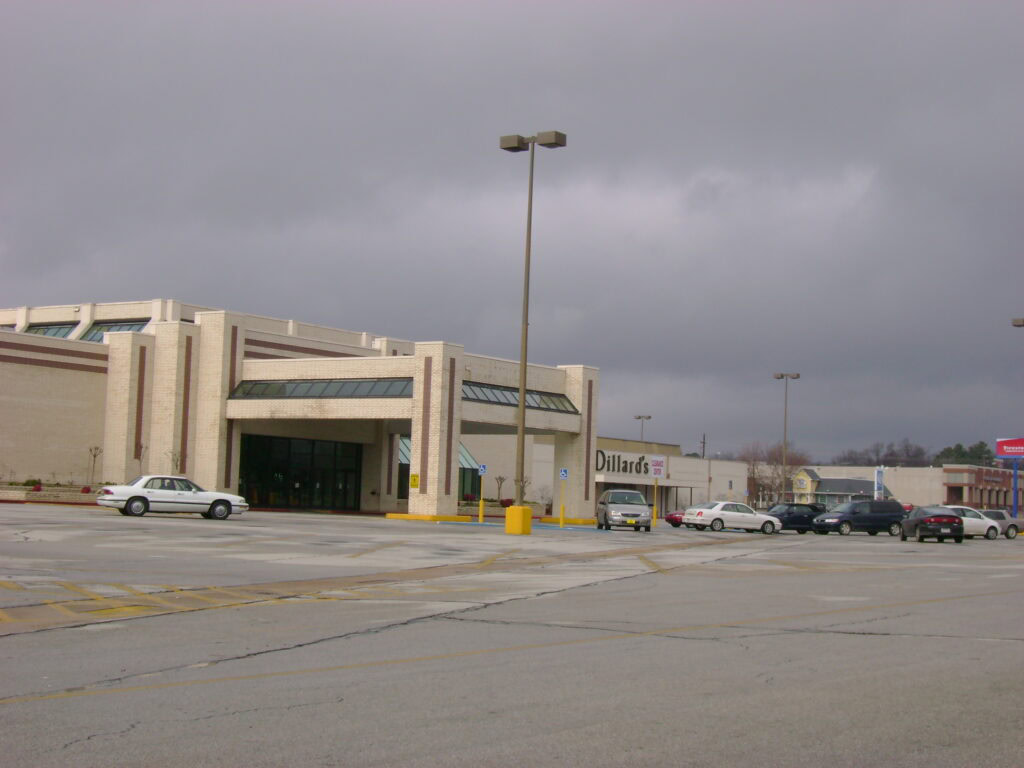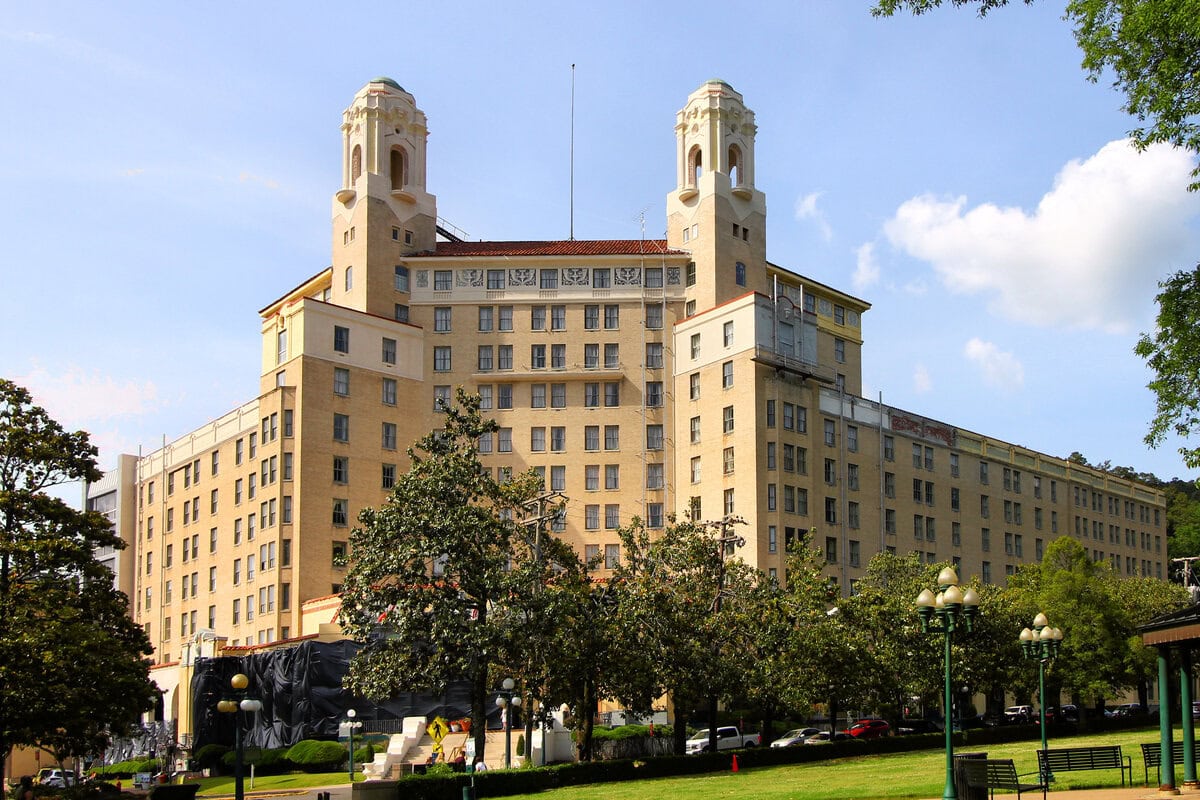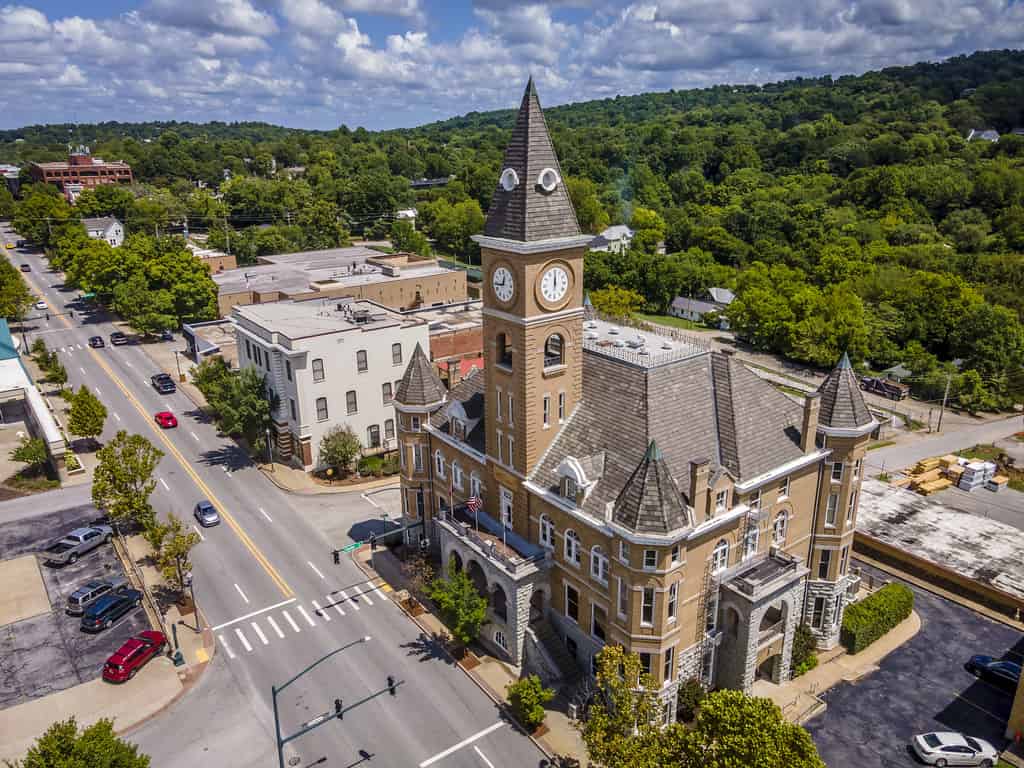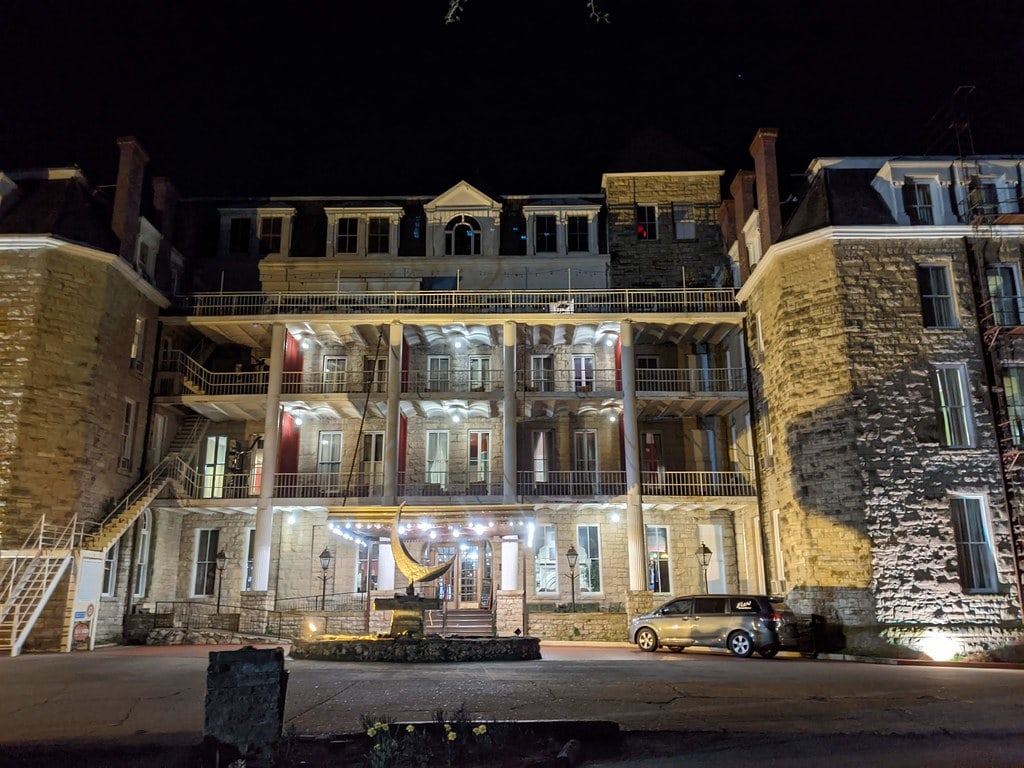Indian Mall Beginnings and Early Vision
October 1967 marked the quiet beginning of something big for Jonesboro. A few storefronts opened early inside a still-unfinished complex on Caraway Road: Sears, Blass, and the five-and-dime TG&Y among them.
The idea of an enclosed, air-conditioned shopping center was still new to Arkansas, but the crowds came anyway, curious to see what Warmack & Company of Texarkana was building on the city's edge.
By May 1968, the full development opened under a name that fit the town's college spirit: Indian Mall, a nod to Arkansas State University's "Indians."
The $1.7 million project covered nearly sixteen acres, offering 385,000 square feet of retail space and parking for more than a thousand cars.
It wasn't just a mall; it was a statement about where Jonesboro was heading: upward, outward, and toward modern suburban life.
The mall opened with a few stores that people already knew.
Blass sold dresses and suits. TG&Y had cheap toys and things for the house.
Sears was where people bought tools and appliances.
Stimson's was the grocery store. It wasn't fancy, but it was all in one place.
The lights were bright, the air was cold, and everything smelled like popcorn from the snack stand.
Surviving the Storms and Expanding in the 1970s
On May 27, 1973, tornadoes ripped through Jonesboro and hit the Indian Mall hard.
Several shopping centers were damaged that night.
Parts of the mall's roof came off, and glass from the front panels blew across the parking lot.
Dr. Theodore Fujita, who created the tornado scale, later said three separate twisters struck the city almost at once.
Three people were killed, and more than 250 were hurt.
Crews repaired the building over the summer, and stores reopened before the end of the year.
In 1976, Warmack & Company added a JCPenney store to the mall.
That expansion brought more small shops and extra parking.
Brighter lights were installed in the walkways, and the building looked newer than it had since opening.
By the end of the decade, Indian Mall drew shoppers from small towns all over northeast Arkansas.

The 1980s Modernization
In the 1980s, the mall started to show its age.
When Stimson's grocery closed, the owners built a food court in that space and added more small shops.
It gave people another reason to stop and eat.
New stores came in. Singer sold sewing machines. Zales sold jewelry.
Merle Norman had makeup. Hallmark and the paperback bookstore stayed busy most weekends.
The floors were replaced, and a skylight was added so daylight came through the roof.
Families ate at Wyatt's or Luby's and walked the halls afterward.
On weekends, there were small events, music, and charity tables.
For years, the Indian Mall was still the only enclosed mall in the area.
1990s Cultural Role and Community Ties
In the 1990s, the mall was part of daily life. Teenagers met there after the games.
Families went for Santa pictures every Christmas.
The stores people remember from that time were Gap, Waldenbooks, KB Toys, and Radio Shack.
When the tragic Westside Middle School shooting happened on March 24, 1998, two students killed five people and injured ten.
The mall became a place where people gathered. Rev.
Phillip McClure and other pastors held meetings and talked with anyone who came.
It was one of the only indoor places big enough for everyone who needed to be there.

Competing Visions and the Rise of Turtle Creek
During the late 1990s, Jonesboro's steady growth drew competing plans for new shopping centers.
Warmack & Company, owner of Indian Mall, proposed a project called Southern Hills Mall.
The design called for updated locations for JCPenney, Dillard's, and Sears, along with a new Target.
The existing Indian Mall was expected to be repurposed once construction finished.
Land was purchased and some early work began, but the plan stalled and was later dropped.
Around the same time, developer David Hocker & Associates from Kentucky announced plans for a competing center, The Mall at Turtle Creek.
The Jonesboro Metropolitan Area Planning Commission approved the project in 2004.
Construction began shortly after, and the 750,000-square-foot mall opened on March 29, 2006.
It featured more than a hundred stores and modern design standards.
When it opened, most of Indian Mall's major tenants: Dillard's, JCPenney, and others moved there, leaving the older mall with only a few stores still operating.
Decline and Closure
After 2006, Indian Mall entered freefall. The departure of its anchors triggered a cascade of vacancies.
Within two years, nearly every national tenant had left.
By early 2008, only Sears, an insurance office, and GameStop remained open.
On February 22, 2008, local news outlet KAIT 8 aired "Doors Close: Remembering the Indian Mall," reporting that the mall's interior would be locked to the public for good.
The broadcast captured longtime shoppers reminiscing about weekend outings and prom dress shopping.
The closure coincided with Arkansas State University's retirement of the "Indians" mascot, ending two intertwined local symbols in the same year.

Demolition and Rebirth of the Site
The property's next chapter began when MBC Holdings purchased it in 2007, announcing plans to redevelop the 16-acre parcel.
After several years of vacancy, demolition began in January 2012, with crews removing the main concourse while Sears remained open behind temporary walls.
By March 2012, demolition was complete, clearing the way for new construction.
On June 12, 2013, Jonesboro's planning commission unanimously approved Caraland LLC and Kroger's site plan for a 123,000-square-foot Kroger Marketplace and fuel station.
Groundbreaking followed in January 2014, and on November 19, 2014, the Kroger Marketplace officially opened to the public.
The store became one of Kroger's largest in Arkansas, featuring expanded grocery, home, and apparel sections.
Sears: The Final Anchor
Even as the mall disappeared, Sears lingered as a standalone store.
It remained open for nearly five years after the rest of the Indian Mall was demolished.
Nationally, Sears faced ongoing decline, and on January 4, 2017, Business Insider published a closure list that included the Jonesboro store at 1901 S Caraway Road.
The store closed permanently in late March 2017, and the auto center followed that October.
Its closure marked the last remaining link to the original 1968 mall.

Redevelopment Momentum
In August 2017, Haag Brown Commercial announced the sale of the former Indian Mall property to Highland Street Group LLC of Memphis, Tennessee.
Haag Brown was authorized to oversee the redevelopment of the 16-acre site.
The plan called for 35,000 square feet of new retail space near the Kroger Marketplace and the old Sears building.
It also included redevelopment of the 80,000-square-foot Sears structure, four restaurant pads along Caraway Road and Highland Drive, and a mixed-use area behind Kroger Marketplace.
Over the next few years, new tenants moved in, including Texas Roadhouse, Tommy's Express Car Wash, and several smaller restaurants.
The development restored the property as an active part of Jonesboro's main commercial corridor and created new retail and service jobs in the area.
Return of Local Ownership
In October 2020, two homegrown companies, Gearhead Outfitters and Gamble Home, purchased the former Sears building for $4.9 million, including the 5.8-acre tract beneath it.
The purchase represented a symbolic full circle: Gearhead Outfitters had operated inside Indian Mall during its early years.
The renovation plan divided the 82,000-square-foot structure into three primary sections: Gamble Home's showroom on one end, Gearhead Outfitters and La-Z-Boy Comfort Studio in the center, and roughly 25,000 square feet of flexible space on the other.
Design renderings showed a complete exterior overhaul with a modern façade, covered plaza, new walkways, greenery, and a small food-truck court.
Construction was phased over 2021 and 2022, turning the last remnant of Indian Mall into a contemporary retail and event complex.

The Site in 2024–2025
As of mid-2024, the property continues active use under Kroger Marketplace and adjoining businesses.
A May 15, 2025, filing with the Arkansas Department of Health confirmed a planned remodel and addition of a Starbucks kiosk inside the Kroger, signaling continued investment and steady retail performance.
Meanwhile, archival discoveries keep the site in the local conversation.
In 2024, newly digitized camcorder footage shot inside the Indian Mall on July 3, 1987, was published.
These rediscoveries highlight the nostalgia the site still evokes nearly sixty years after its opening.





